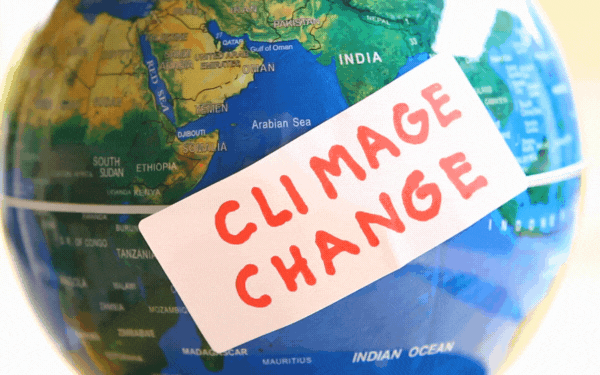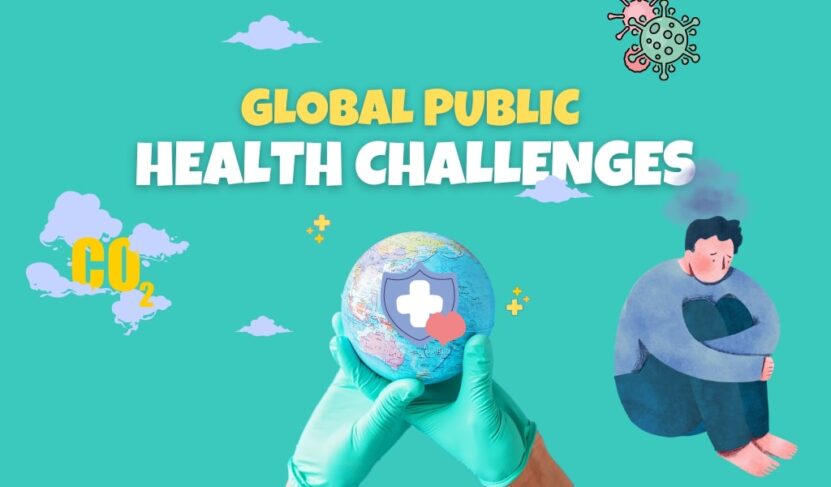In today’s interconnected world, public health threats can quickly evolve into global crises. The ongoing COVID-19 pandemic is a prime example of how rapidly a health issue can spread across borders, causing massive disruptions to societies and economies. In this blog post, we will explore ten global public health threats that have the potential to significantly impact our lives.
1. Antimicrobial Resistance: The Silent Killer
Antimicrobial resistance (AMR) is an alarming global health threat that often goes unnoticed. AMR occurs when microorganisms, such as bacteria, viruses, and fungi, evolve to resist the drugs designed to kill them. This makes infections more difficult to treat and increases the risk of disease spread, severe illness, and death.
Overuse and misuse of antibiotics, poor infection control practices, and inadequate sanitation contribute to the rise of AMR. According to the World Health Organization (WHO), if not addressed, AMR could cause up to 10 million deaths per year by 2050, surpassing cancer as the leading cause of mortality.
To combat AMR, we must promote the responsible use of antibiotics, invest in research and development for new antimicrobials, and improve infection prevention and control measures.
2. Climate Change: The Invisible Catalyst

Climate change is an undeniable global public health threat that exacerbates existing health problems and creates new ones. Rising temperatures, extreme weather events, and shifting ecosystems can lead to increased risks of infectious diseases, malnutrition, and mental health issues.
For example, warmer temperatures can alter the habitats and breeding patterns of disease-carrying vectors such as mosquitoes, ticks, and rodents, leading to the spread of vector-borne diseases like malaria, dengue, and Lyme disease. Furthermore, extreme weather events, such as floods and hurricanes, can result in water contamination and displacement, increasing the risk of waterborne diseases and mental health issues among affected populations.
Addressing climate change requires urgent, coordinated efforts from governments, businesses, and individuals. Reducing greenhouse gas emissions, protecting ecosystems, and investing in climate-resilient health systems are crucial steps in mitigating the health impacts of climate change.
3. Non-Communicable Diseases: The Stealthy Epidemic
Non-communicable diseases (NCDs), including cardiovascular diseases, cancers, respiratory diseases, and diabetes, account for over 70% of all deaths worldwide. These chronic conditions can be attributed to a combination of genetic, physiological, environmental, and behavioral factors.
The rise of NCDs can be linked to rapid urbanization, industrialization, and globalization, which have led to sedentary lifestyles, unhealthy diets, and increased exposure to pollution. The WHO estimates that by 2030, NCDs will cause 52 million deaths annually, with the majority occurring in low- and middle-income countries.
Prevention and control of NCDs must focus on reducing exposure to risk factors and improving access to quality healthcare services. This includes promoting healthy lifestyles, providing affordable and accessible healthcare, and implementing evidence-based policies to address the social determinants of health.
4. Mental Health: The Unseen Burden

Mental health disorders are a growing global public health concern, with depression, anxiety, and substance abuse among the most common. According to the WHO, nearly 1 billion people are affected by mental health disorders, and suicide claims the lives of around 800,000 people each year.
Societal stigma, inadequate funding, and insufficient mental health services contribute to the challenges of addressing mental health disorders. Furthermore, the COVID-19 pandemic has highlighted and exacerbated the mental health crisis, with lockdowns, job losses, and social isolation taking a toll on people’s mental well-being.
Addressing the mental health crisis requires a multi-pronged approach that involves increasing awareness, reducing stigma, and improving access to mental health services. Governments, organizations, and communities must invest in comprehensive mental health care, promote mental health literacy, and encourage open conversations about mental health issues.
5. Pandemic Preparedness: The Ongoing Battle
The COVID-19 pandemic has been a stark reminder of the devastating consequences of infectious disease outbreaks. In an increasingly interconnected world, the risk of new pathogens emerging and spreading is higher than ever before. As such, pandemic preparedness is a crucial global public health priority.
To prepare for and prevent future pandemics, governments, and international organizations must invest in robust surveillance systems, early detection technologies, and rapid response capabilities. Furthermore, strengthening health systems, promoting vaccine development and equitable distribution, and ensuring effective communication between countries and organizations are essential to mitigating the impacts of future pandemics.
6. Malnutrition: The Double-Edged Sword

Malnutrition encompasses both undernutrition and overnutrition, and it is a significant global public health threat. Undernutrition, which includes stunting, wasting, and micronutrient deficiencies, primarily affects children and can lead to impaired cognitive development, weakened immunity, and increased susceptibility to infections. Overnutrition, on the other hand, is characterized by excessive consumption of unhealthy foods and can lead to obesity and associated health issues, such as heart disease and type 2 diabetes.
Addressing malnutrition requires a multi-sectoral approach that includes improving access to nutritious food, promoting sustainable agriculture, and implementing targeted nutrition interventions. Additionally, raising awareness about the importance of a balanced diet and implementing policies to reduce the availability and marketing of unhealthy foods can help combat overnutrition.
7. Access to Healthcare: The Inequality Barrier
Inequality in access to healthcare is a pervasive global public health issue. Millions of people worldwide lack access to essential health services, including primary care, vaccinations, and reproductive health services. This disproportionately affects low-income and marginalized populations, exacerbating existing health disparities and perpetuating the cycle of poverty and ill health.
Improving access to healthcare requires addressing the social determinants of health, including poverty, education, and gender inequality. Governments and organizations must invest in healthcare infrastructure, ensure affordable and accessible healthcare services, and implement policies that promote health equity.
8. Substance Abuse: The Escalating Crisis

Substance abuse, including alcohol, tobacco, and illicit drugs, is a growing public health concern with far-reaching consequences. Substance abuse can lead to a wide range of physical and mental health issues, as well as social problems such as unemployment, crime, and domestic violence. The opioid crisis, in particular, has emerged as a significant challenge in many countries, including the United States, where it has resulted in a surge of overdose-related deaths.
Addressing substance abuse requires a multi-faceted approach that includes prevention, treatment, and harm reduction strategies. Governments and organizations must invest in evidence-based prevention programs, provide accessible and affordable treatment services, and implement policies that reduce the harms associated with substance use.
9. Water, Sanitation, and Hygiene: The Basic Necessities
Access to clean water, sanitation, and hygiene (WASH) is a fundamental human right and a crucial public health issue. Around 2.2 billion people lack access to safely managed drinking water, while 4.2 billion people do not have access to adequate sanitation services. Inadequate WASH can lead to waterborne diseases such as cholera, dysentery, and typhoid, as well as malnutrition and stunting in children.
Addressing the WASH crisis requires concerted efforts from governments, organizations, and communities. Investment in water and sanitation infrastructure, promotion of hygiene education, and implementation of innovative solutions are essential to ensuring access to clean water and sanitation for all.
10. Urbanization and Health: The Changing Landscape

Rapid urbanization is transforming the global public health landscape. Over half of the world’s population now lives in urban areas, and this number is expected to increase in the coming years. Urbanization presents both challenges and opportunities for public health. On the one hand, it can lead to overcrowding, air pollution, and increased exposure to infectious diseases. On the other hand, it offers the potential for improved access to healthcare, education, and economic opportunities.
To harness the potential of urbanization for public health, governments and organizations must invest in sustainable urban planning and infrastructure, promote healthy urban environments, and ensure equitable access to healthcare and social services for urban residents.
Final Words
The five global public health threats discussed in this article – antimicrobial resistance, climate change, non-communicable diseases, mental health, and pandemic preparedness – pose significant challenges to our health and well-being. By understanding and addressing these threats, we can work together to build a healthier, more resilient future for all.
Our interconnected world demands a collective, informed response to these public health threats. With thorough research and valuable insights, we hope this blog post has provided you with a comprehensive understanding of these complex issues, empowering you to take action and make informed decisions that contribute to a healthier world.

